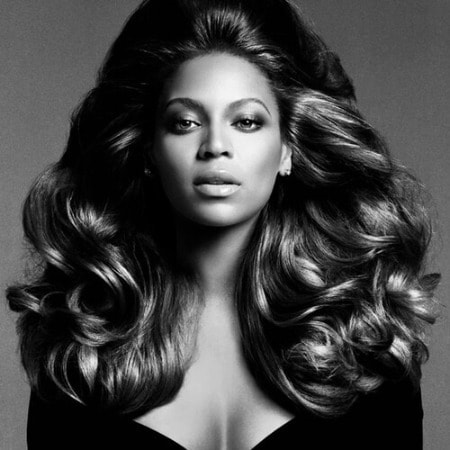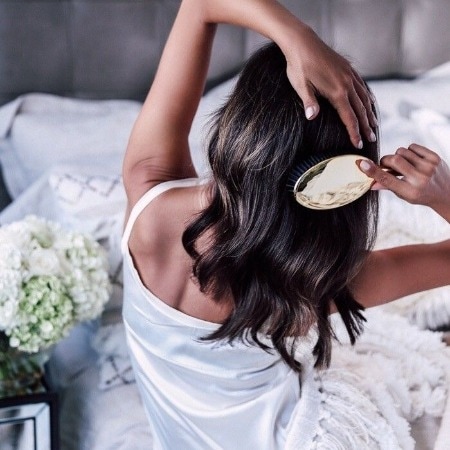
How to Tease Hair Without Causing Damage
Teasing hair, also known as "backcombing" or "ratting," is a classic technique for creating volume, texture, and dramatic updos. While it’s a go-to method for achieving bold styles, improper teasing can lead to breakage, split ends, and long-term damage. The good news? With the right tools and techniques, you can achieve that coveted lift without sacrificing hair health. Here’s how to master the art of damage-free teasing.

Source: Pinterest
What Is Teased Hair
Teasing hair is a hairstyling technique that’s all about creating volume and texture. It involves backcombing sections of your hair with a fine-tooth comb or teasing brush. By gently pushing the strands toward the roots, you can build a fuller, more lifted look. Unlike other hairstyling methods that focus on sleekness or curls, teasing specifically targets the hair’s structure to achieve that extra height and body.
Fun Fact: Teased hairstyles, or backcombing hairstyles have been around for decades and often reflect cultural trends. In the 1960s, big, voluminous hair symbolized rebellion and individuality. The 1980s punk movement took teasing to the extreme, using it to create bold, unconventional looks that challenged societal norms.
Tools for Teased Hair
✅ A fine-tooth teasing comb
✅ Wide-Tooth comb
✅ Hair clips
✅ Hairspray
Pro Tip: Always start with clean, dry hair. Oily or damp strands won’t hold the teased texture as well, and they’re more prone to damage.
How to Tease Hair Safely
Now that your hair is ready, it’s time to learn how to tease your hair safely. Here is a video tutorial. You can also find a professional and detailed text version of the tutorial below, which I hope you find helpful.
1. Start with Healthy, Prepared Hair
Healthy hair is resilient hair. Begin by washing and conditioning with a moisturizing formula to strengthen strands. For extra protection, apply a lightweight heat protectant or leave-in conditioner. These products act as a barrier, minimizing static and snagging.
2. Choose the Right Tools
Depending on your preference, choose a fine-tooth comb, a wide-tooth comb, or a detangling brush with flexible bristles. A boar bristle brush is ideal for smoothing the top layer after detangling. Always use small sections (1-2 inches wide) to evenly distribute the tension.
3. The Gentle Teasing Technique
Step 1: Hold a section of hair vertically, taut but not stretched.
Step 2: Starting midway down the strand (never at the roots), gently push the comb downward toward the scalp in short, soft strokes. This builds volume without stressing the roots.
Step 3: Repeat 2-3 times per section—over-teasing creates tangles.
Step 4: Lightly smooth the top layer with a brush or fingers to conceal teased sections.
Pro Tip: Tease in layers. Focus on the crown and mid-lengths for natural-looking volume, avoiding delicate ends.
4. Avoid Common Pitches
❌ Never tease wet hair: Wet strands are fragile and prone to stretching and breaking.
❌ Skip hairspray before teasing: Applying it pre-tease creates stiffness and friction. Use it after to set the style.
❌Don’t rip through tangles: If hair knots, apply a detangling spray and gently separate with fingers first.
How to Undo Teasing Hair Safely
Most damage occurs when teased hair is removed aggressively. Patience is key, rushing can cause breakage.

Source: Pinterest
◆ Start by applying a generous amount of conditioner to soften your hair and reduce friction. Let it sit for a few minutes to work its magic. Then, use one of these tools to gently detangle:
◆ A wide-tooth comb for loosening knots without tugging.
◆ A wet brush with flexible bristles, perfect for delicate strands.
◆ Your fingers are the gentlest option for working through tangles.
◆ Always detangle in small sections. Begin at the ends and slowly work your way up to the roots. This method prevents unnecessary pulling and breakage.
Long-Term Hair Care for Teased Hair
Teased hairstyles can look stunning, but long-term care is essential to keep your hair healthy. Incorporate these habits into your routine:
✅ Deep condition your hair weekly to restore moisture and strengthen your strands.
✅ Limit teasing to special occasions. Frequent teasing can weaken your hair over time.
✅ Trim your hair regularly to prevent split ends and maintain its overall health
✅ Use nourishing hair masks or oils to repair any damage caused by styling.
Healthy hair thrives with consistent care. By balancing your love for voluminous hair with these protective practices, you can enjoy bold styles without compromising your hair’s integrity.
Summary
Teasing doesn’t have to be a hair horror story. By prioritizing preparation, using mindful techniques, and nourishing strands post-style, you can enjoy bold, voluminous looks while keeping your hair strong and healthy. Remember: moderation and care are the secrets to balancing beauty and hair integrity.
FAQ
Are There Any Alternative Damage-Free Volume Hacks
If daily teasing is a must, try these gentler options:
Velcro rollers: Lift roots without combing.
Dry shampoo: Adds texture and grip.
Clip-in extensions or volumizing inserts: Instant, reusable fullness.
How Often Can You Tease Your Hair?
You should limit teasing to special occasions or once a week. Frequent teasing can weaken your strands and lead to breakage over time.
Can You Tease Hair Extensions?
Yes, but be gentle! Use a soft-bristled teasing brush and avoid teasing near the bonds or clips to prevent damage to both your extensions and natural hair.
What Should You Do if Your Teased Hair Feels Dry?
Apply a deep conditioning mask or hair oil to restore moisture. Focus on the ends, where dryness is most common, and avoid overusing styling products.
Read More
Beginner's Guide About Bone Straight Hairs
